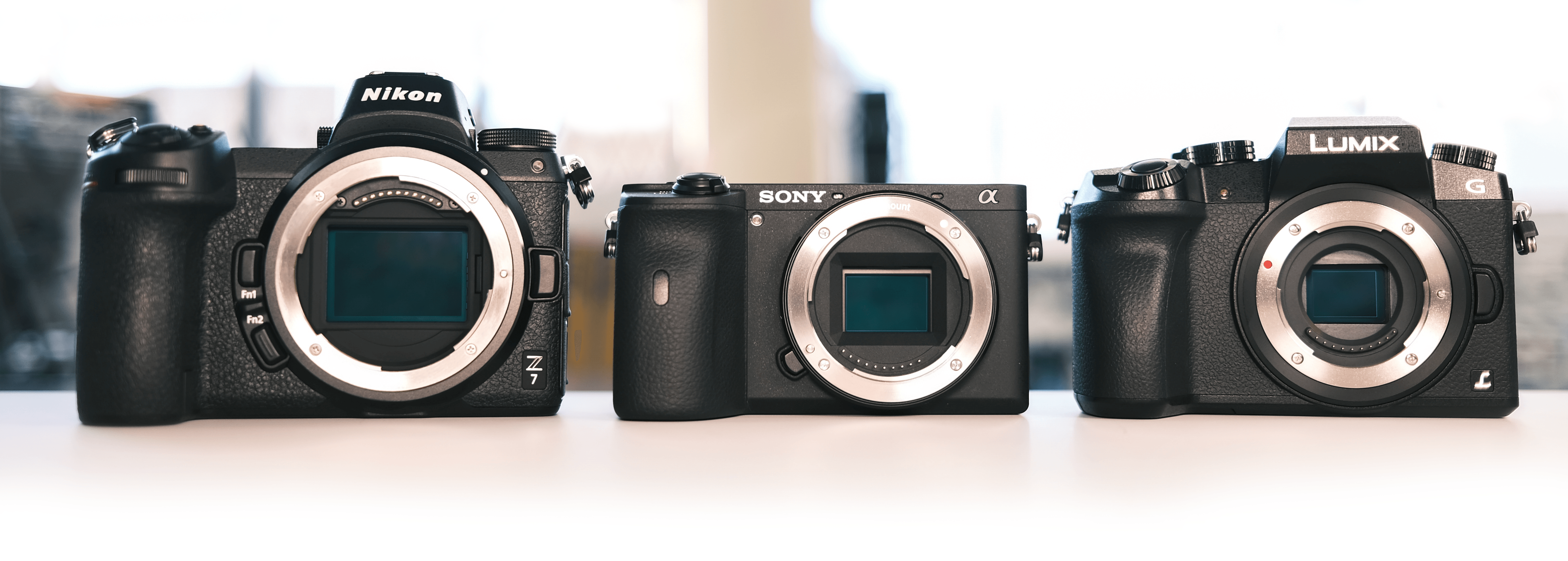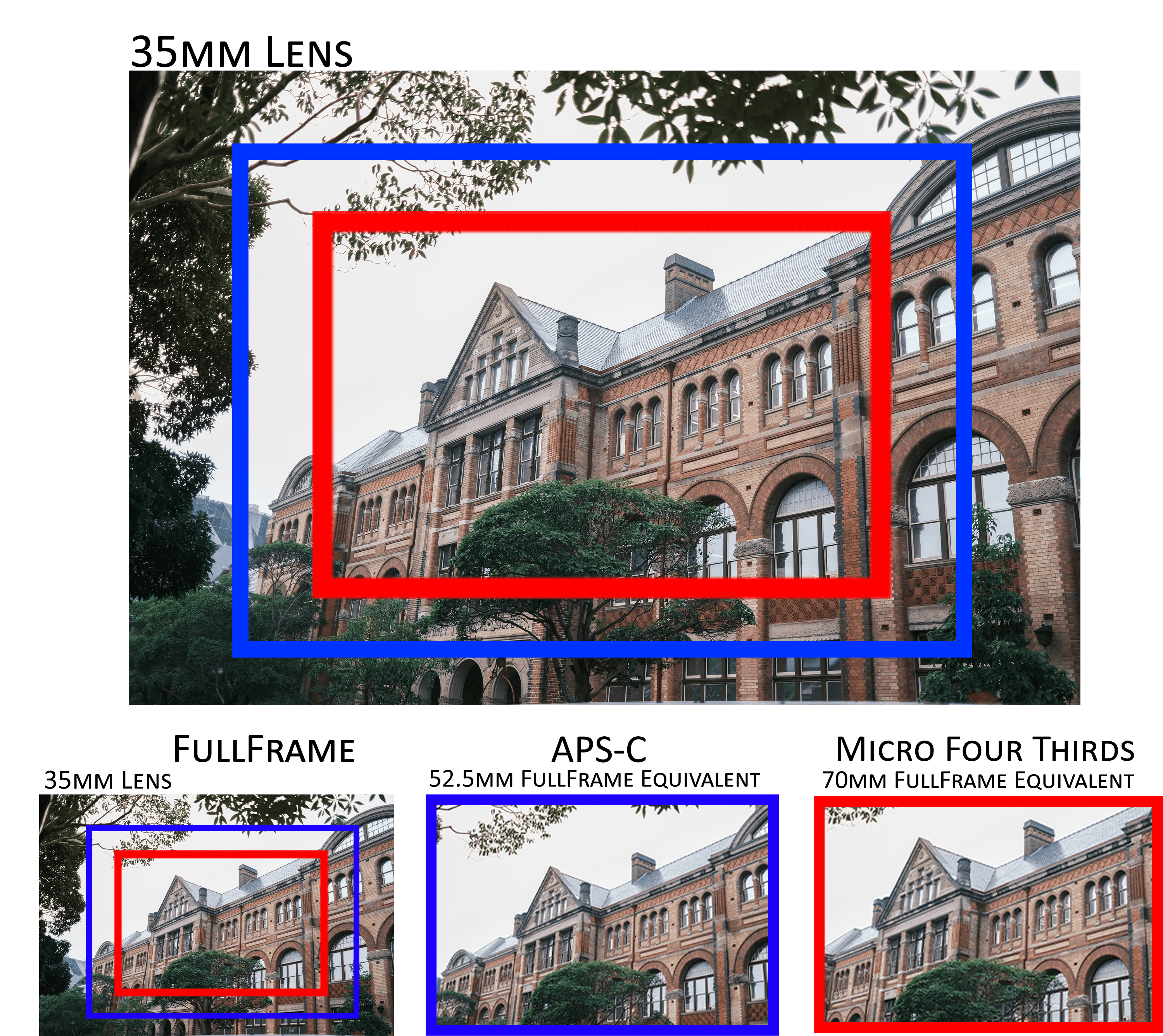What Are Digital Camera Sensor Sizes

What Are Digital Camera Sensor Sizes
We've all watched as the world of photography underwent a digital evolution, packing more into the palm of our hand than ever thought. The shot of the century isn't going to have the quality you want if your camera isn't rightly equipped for the job.
How Sensor Size Changes Capture Data
Larger sensor is more sensor. More sensor means taking in more data, light, colours, and everything else that makes up that image, where it is then is being turned into numbers before the screen displays it back. So you can see why people would immediately gravitate to the biggest sensor possible, but there are things more things to consider.
Crop Factor
The ‘crop factor’ is a variant for each sensor size. This metric is the amount of photo cropped off compared to a standard full-frame shot when taken from the same position and same lens. For example, if you took a picture of a building with a full-frame sensor, you see the full building. Take that same shot with an APS-C sensor and you'll notice the picture looks "zoomed in", no longer able to see the outer 25% of the building as the sensor doesn't span that far.
Let's look at this image below I took on a full-frame camera through a 35mm lens.


We can see the effects each sensor size, full-frame, APS-C and Micro Four Thirds, would have.
Irrelevant of sensor size, a 35mm lens is a 35mm lens, you can look further into focal lengths if you want, but it is the sensor size peering through that 35mm lens that determines the look of it.
There is a constant reference back to full-frame equivalents, which you can visualise in the above photo. If you were to place a 52.5mm lens on a full-frame sensor, it would look like the above 35mm lens on an APS-C, And again with micro four thirds (MFT), if you put a 35mm lens on an MFT sensor, the crop would make it look like you've put a 70mm lens on a full-frame sensor.
Let now just break down each of these three common sensor sizes.
Full Frame - The Golden Standard
Physical Size: 36 x 24 mm
The favourite of professionals, this digital sensor matches the exact size of the negative being used, meaning the image is captured just as you snapped it. No crop factor to worry about as you would with smaller sensors. Entry-level options can be available as low as $1,800 to get you started.
APS-C - Famous Starting Point
23.6 x 15.8 mm (Canon APS-C 22.3 x 14.9mm)
The APS-C sensor is typically referred to as the most common size in entry-level DLSR cameras. Crop factors range from 1.5 to 1.7x, approximately 75% of a full-frame shot. Having more affordable lenses that are compatible with the sensor size makes it a cost-effective choice for images that can be cropped such as animals or sporting events. APS-C cameras will start at around A$1,500. The reason the lenses are more affordable is that lenses are commonly priced by how much glass is in them. If you look at the physical size of the APS-C vs a full-frame - in the featured images we have a Nikon full-frame, Sony APS-C and Panasonic Lumix MFT. - you simply don't need as big a lens to fit around that sensor, however, a large majority of APS-C sensors share the same lens mount with full-frame, where you can use those same lenses and get more reach zoom out of them due to the crop factor. On this point, please double check you are not buying a APS-C lens that is capable of mounting to a full-frame sensor, as there is not enough glass to cover that sensor, even though it will mount on that camera.
Micro Four Thirds - Doubling Effective Focal Length
Size: 17.3mm x 13mm
Known by both Four Thirds and Micro Four Thirds, it gets the name from using a 4:3 image aspect ratio with the sensor around 1/4 of the size you'd find with a full-frame sensor. These are great for distance shots that look "zoomed in" once captured with a crop factor of 2x.
The Four Thirds also offers a more cost-effective alternative to full-frame when it comes to sports and wildlife shots, for the continued reason as you can use a 100mm lens, and it looks like a 200mm would on a full-frame. Though with a trade-off of less detail and dynamic range. As I stated earlier, the bigger the sensor, the more detail, light and colours being captured. the MFT sensor becomes quite noticeably degraded compare to full-frame sensors.
Being the most compact makes it practical for travel and hiking trips, perfect for globe trotters. Pricing starts at around $600, but the cost of lenses are the most affordable.


There are also sensor sizes smaller and larger than these three, which we can quickly mention. I can not think of any interchangeable cameras with a smaller sensor than MFT, but there are plenty with bigger sensors than full-frame.
Medium Format - The Biggest and Brightest
Size: 54 x 41 mm
Medium format captures round images and then crops them down to the desired frame size. It also gives the most vibrancy for colours, with a full-frame sensor potentially having more details instead. Perfect for colour heavy photos or studio shots, but with a hefty price, most commonly above $9000.
Of course for the same theory, the lenses are much more expensive than other sensor sizes and the amount of computing power required to process the amount of data being captured normally means these cameras are physically bigger and heavier than any other.
One Inch - A Compact Camera's Best Friend
Size: 9 x 12mm
Replacing even smaller sensors such as the 1/2.3 inch, the one inch is now the most popular choice amongst compact camera makers as its best use is snapping photos on the go. If it's a point-and-shoot style camera, it most likely uses a one-inch sensor. These are still a bump up above sensors found in smartphones. The latest iPhone currently has a sensor size of 5.79 x 7.01, so you will certainly be getting more detail than those. These compact camera sensor sizes are a completely different discussion to the interchangeable camera sensor size, but one worth a look. Stay tuned.
So which sensor size is right for you?
You may have guessed, but this isn't the easiest thing to answer. It would be worth noting that whatever you buy there will always be a better version out now, or on the way. After selling cameras to photographers of all ranges for a while, I can easily list trends of what people end up choosing but the more important thing to look at is what each manufacture equips with their choice sensor sizes. It would be easy to say, just go get a full-frame camera and then anything beneath that is a compromise. But more than anything, be familiar with an entire lineup of camera systems from the camera body, to lenses and of course sensor sizes. The tweaking of one of these can change a lot. If you understand sensor sizes, you can look at camera choices with a greater understanding of the benefits it will bring to how you capture an image.


